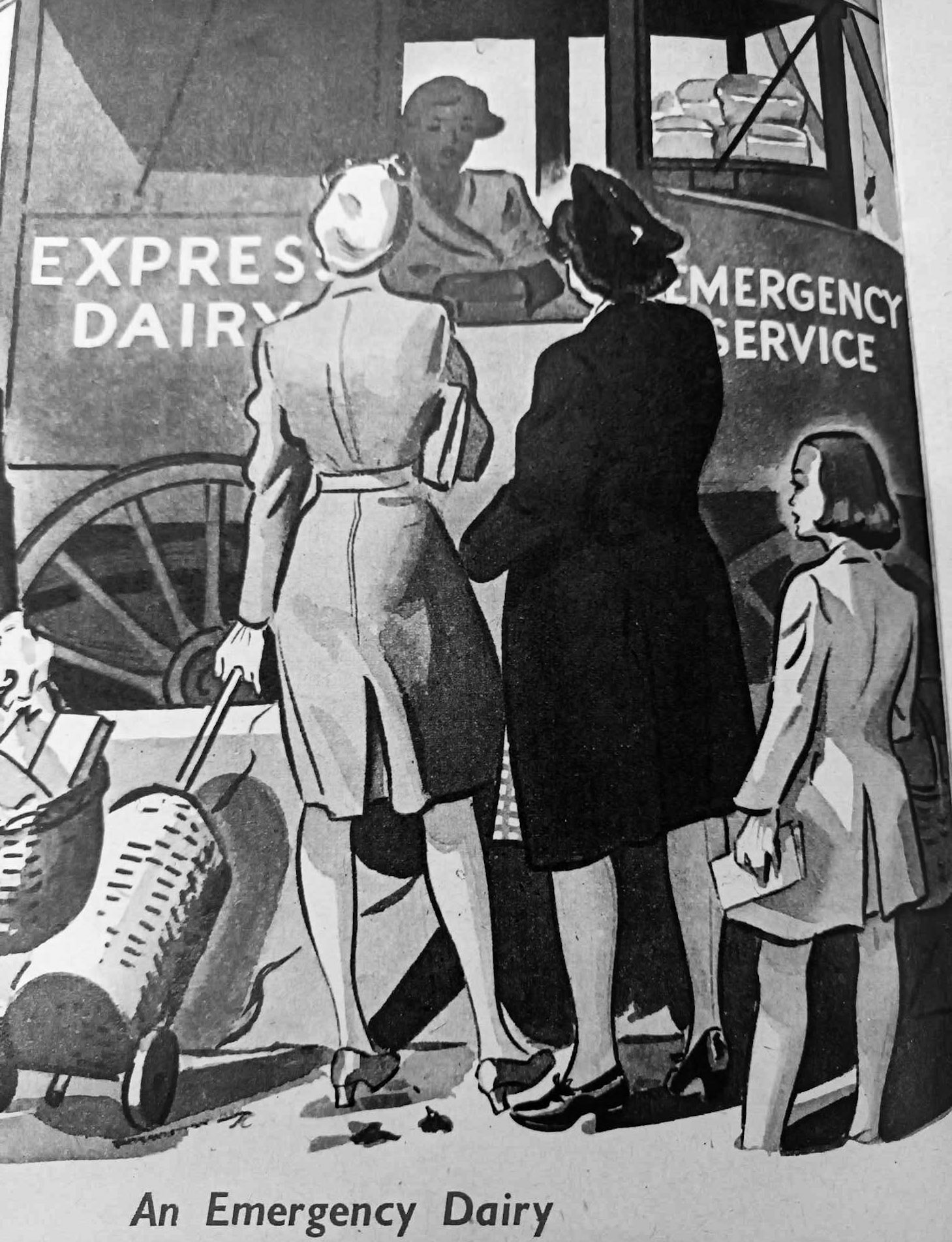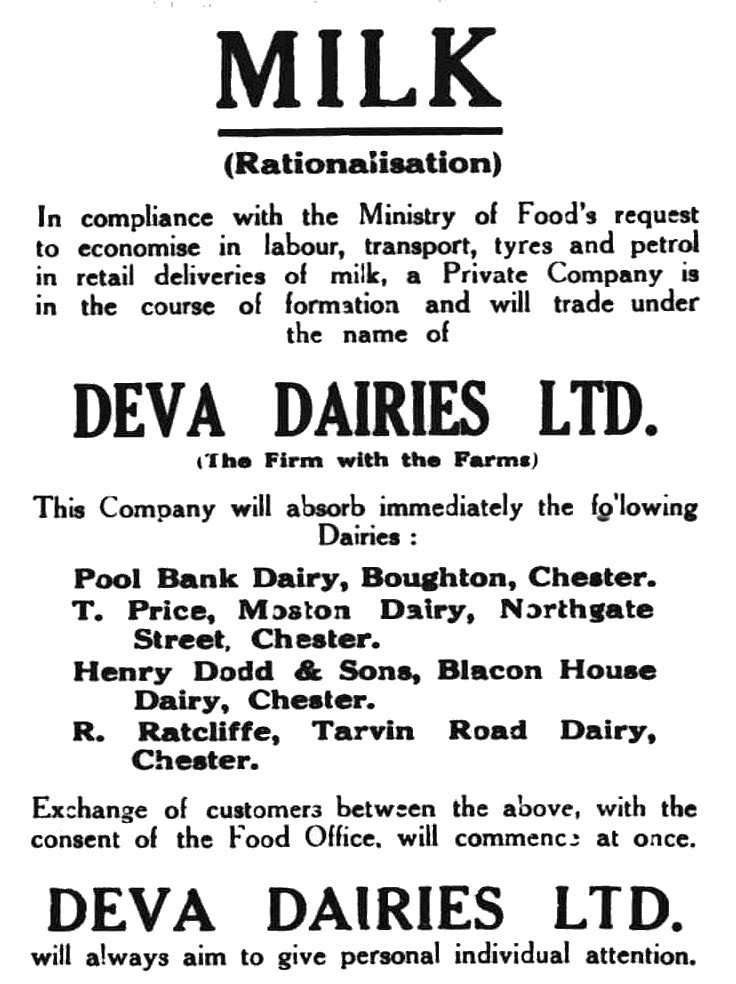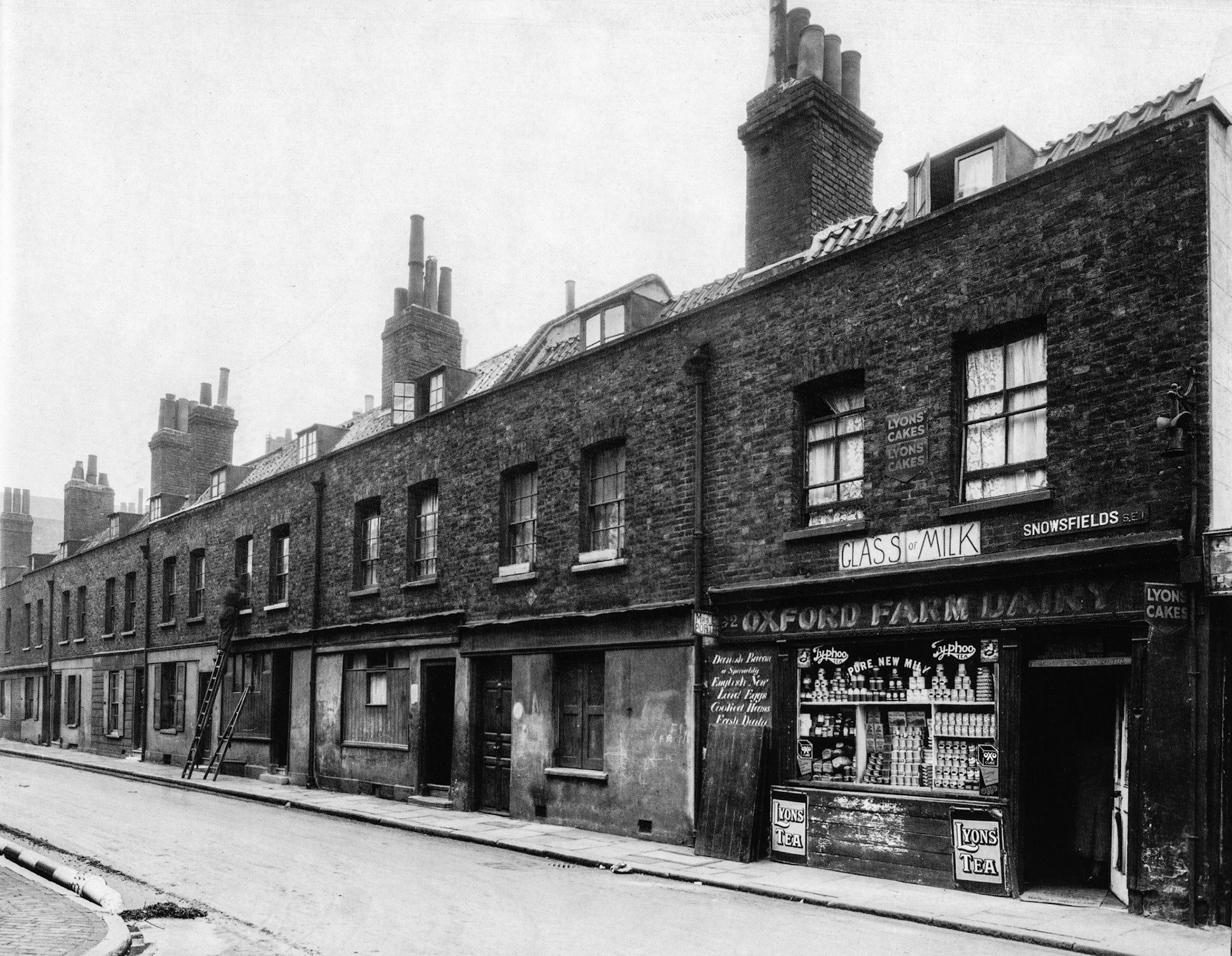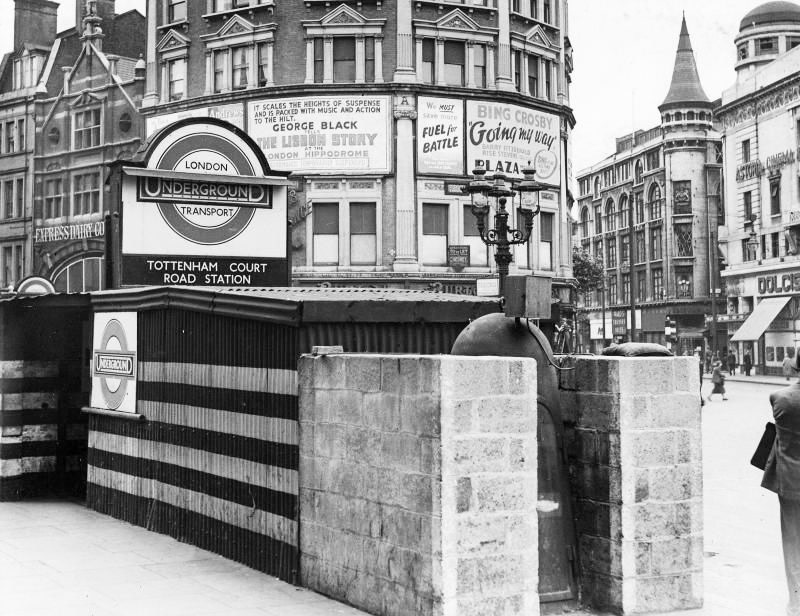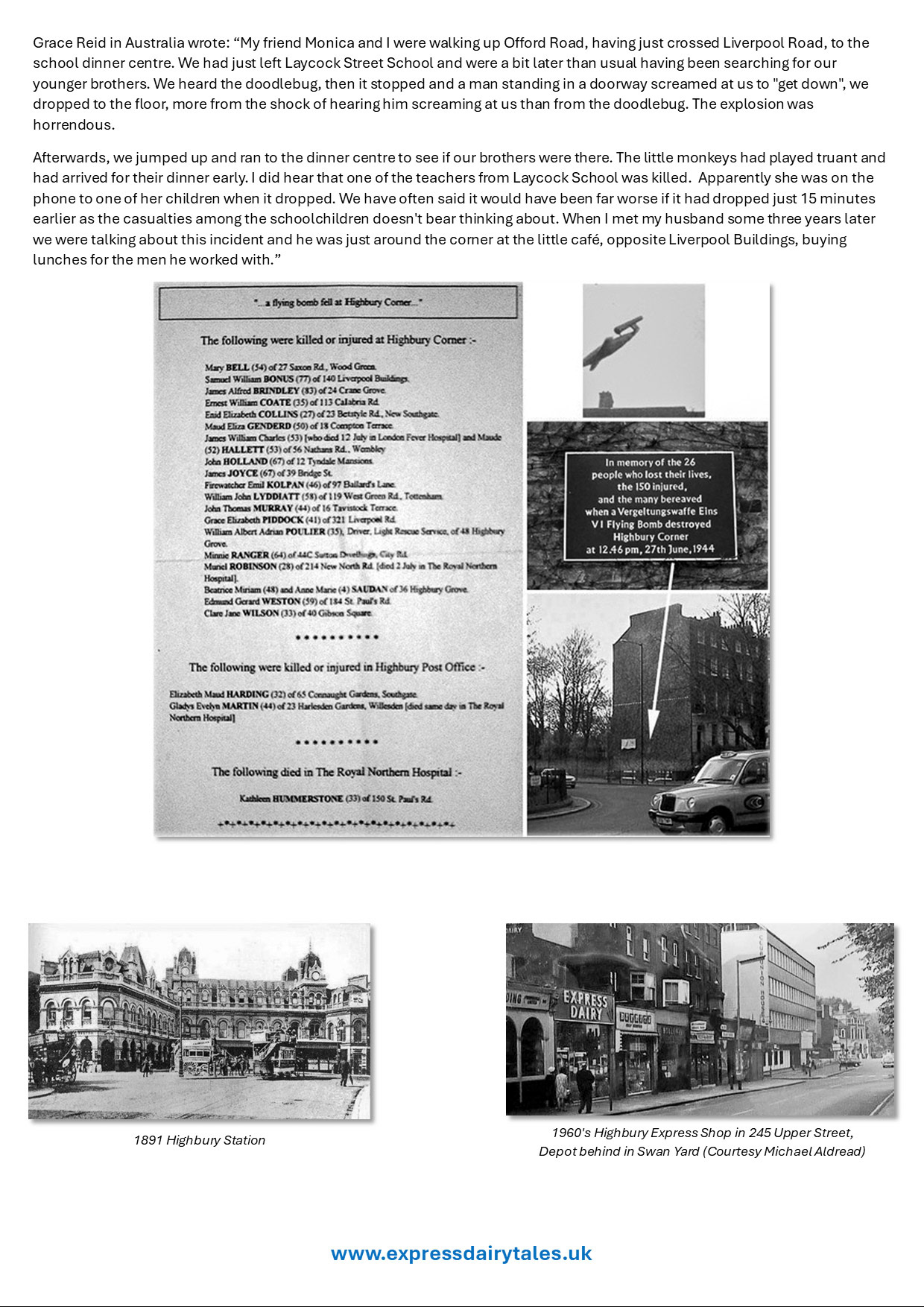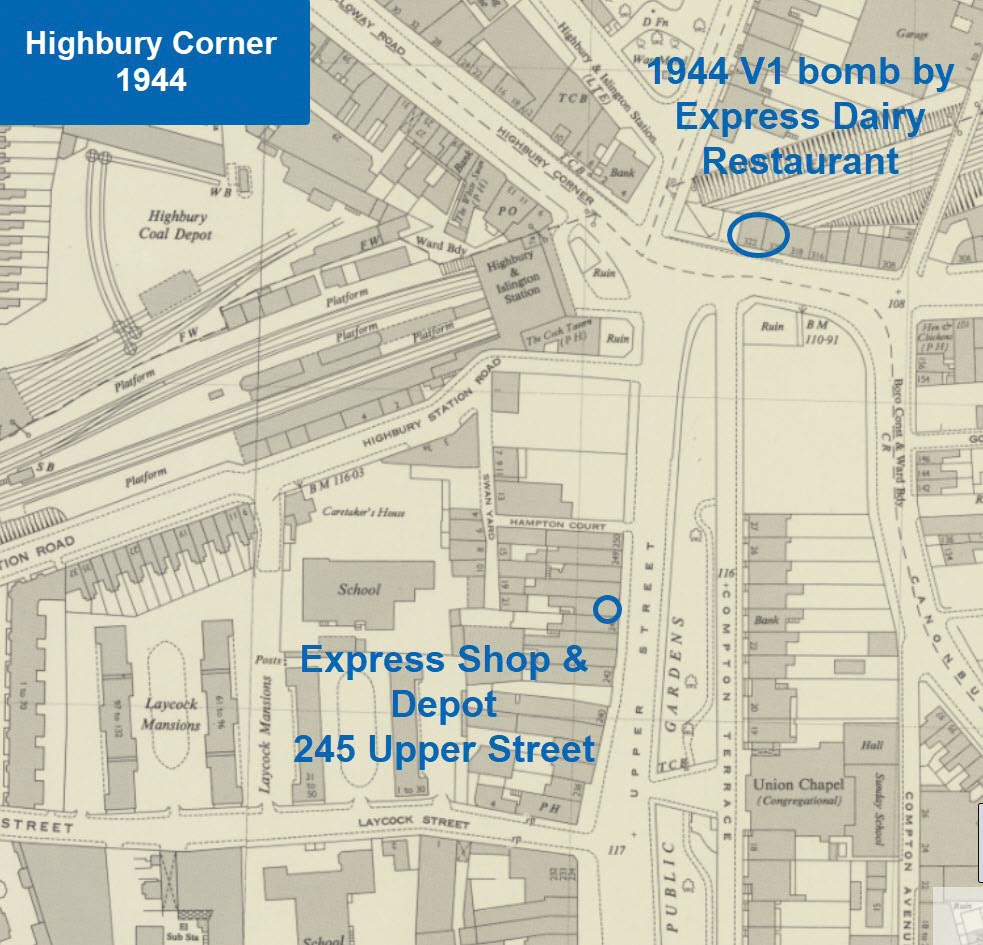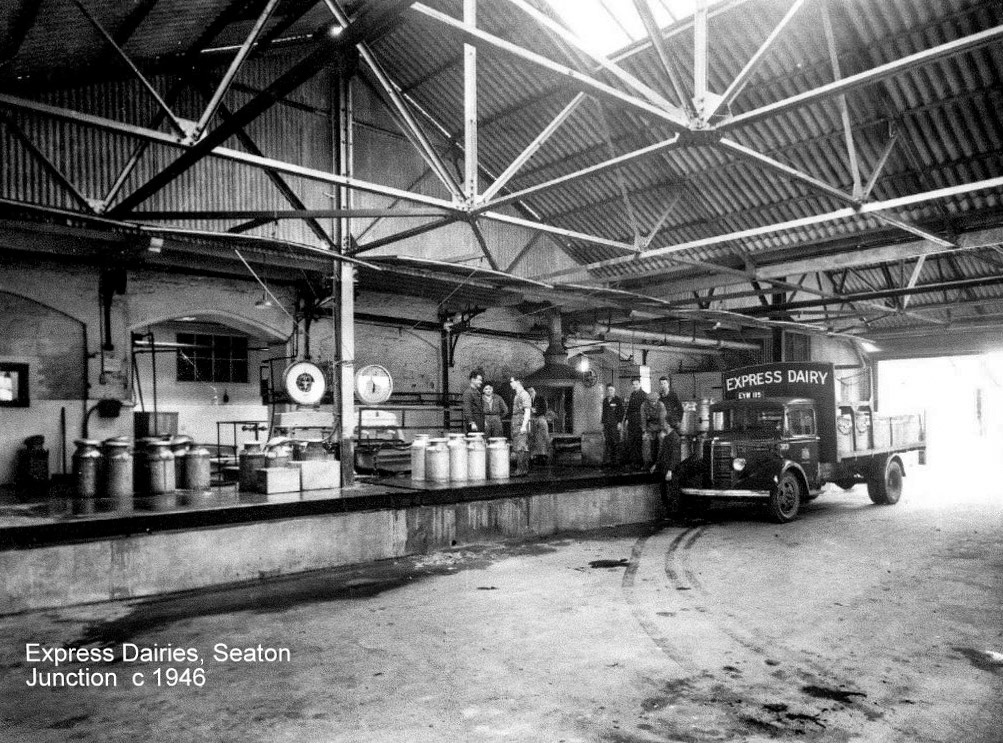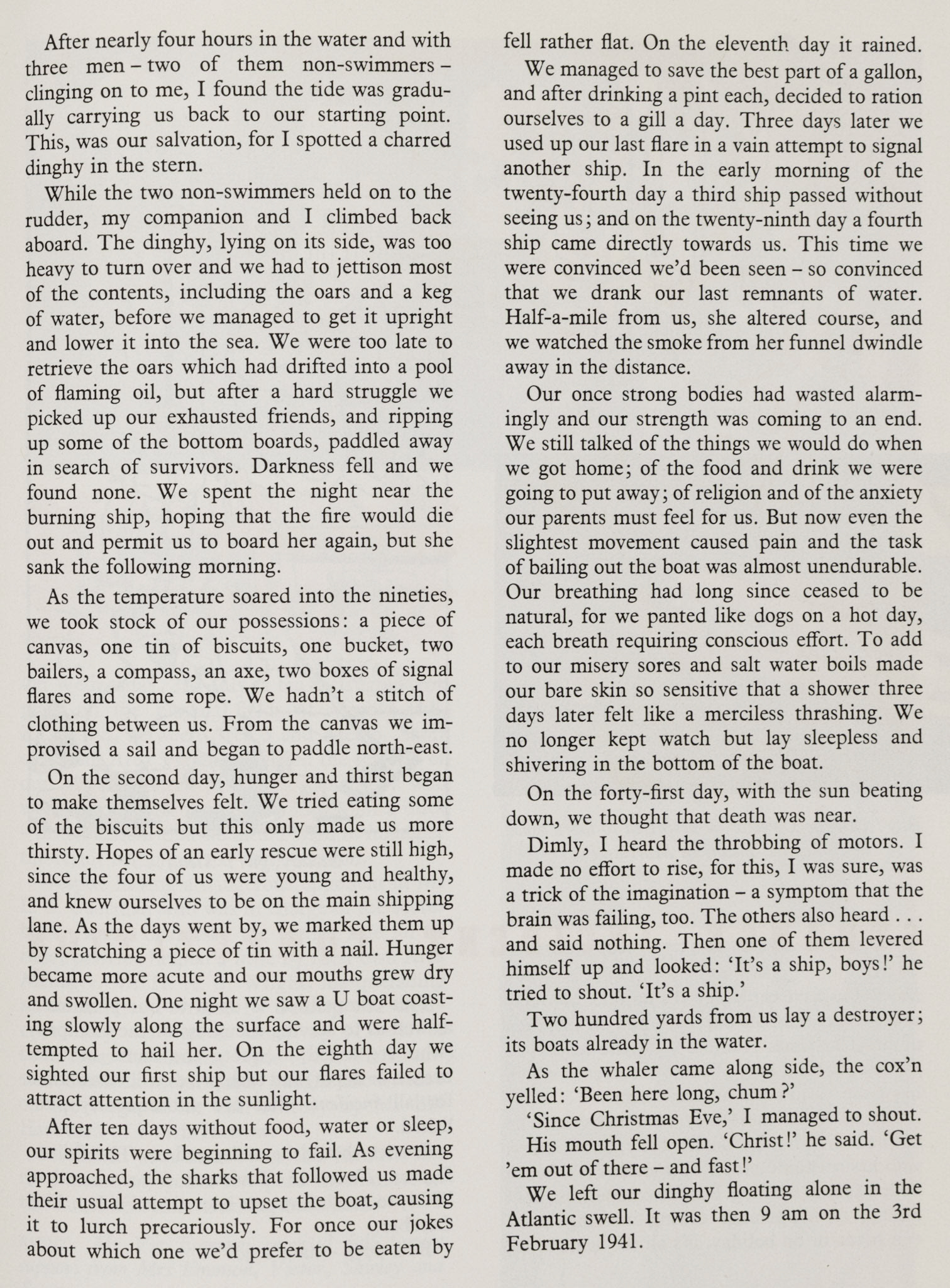
1940's Second World War ARP (Air Raid Precautions) badge (Courtesy Michael Aldread)

1940's Express Dairy in time of war. (Courtesy Gerald Croxford)

1940's wartime milk delivery in London. (Courtesy Aamir Razaq)

1940 Watched by her horse, a female Express 'milkman' makes an entry in her rounds book. During World War II women took over the milk rounds usually run by men. (Courtesy Ann Cator)Credit & Photo by Eric Harlow/Keystone/Getty Images

1940 Temporary Chief Office at Welshmill, Frome, Somerset. (Express News Christmas 1967)

1941 Poster board on platform at Barons Court station, with various notices containing wartime travel information, including "Your dairy produce depends on the Lines behind the Lines". (Courtesy London Transport Collection)

1942 Deva Dairies announce wartime milk rationalisation in Chester.(Courtesy Cheshire Observer - Saturday 27 June)

1942 Rationalisation of milk distribution in wartime. (Courtesy Cheshire Observer - Saturday 19 September)

1942 Letter confirming CM Robarts & Son amalgamating with Express Dairy during wartime. (Courtesy Richard Gaylard)

1942 August. Letter confirming CM Robarts & Son amalgamating with Express Dairy during wartime. (Courtesy Richard Gaylard)

1943 Ministry of Food Post Card, wartime round rationalisation between A1 Dairies and College Farm (Courtesy Paul Smith)

1943. 92-101 Snowsfields, Bermondsey, wartime view but could have been taken 50 years earlier. Little has changed - dingy, soot-blackened frontages and an air of world-weary decrepitude characterised many of London's poorest districts. Surprisingly for wartime, Oxford Farm Dairy is well-stocked with canned produce. (Courtesy GLC Historic Buildings Collection)

1944 Tottenham Court Road station protected by blast wall during the second world war. Express Dairy Co building, probably a shop, on the left. (Courtesy London Transport Collection)

1944 Map of Highbury Corner V1 flying bomb.

1944 Memorial of Highbury Corner V1 flying bomb.

1961 Wembley Central wholesale roundsman Mr Tom Walker has his wartime memories brought back. (Express News Autumn)

1944 Memorial of Highbury Corner V1 flying bomb.

1945 Taken at Cricklewood, this shows another mixture of box vans lined up at Cricklewood. The attractive TSC18 Leyland Beaver on the left, was one of a number of these purchased in 1942. A second, petrol-engined Mammoth Major, fleet no 303, supplied in December 1936 is seen on the right, and wears diminutive wartime headlights. The Atkinson in the centre, however, has a large set, and was another second-hand purchase from Murphy Bros of Leicester. New on January 1st, 1938, chassis no FC514 was fitted with a Gardner 5LW no 40725, fleet no 604, FRF 492. It was purchased in August 1943 for £2,750, and sold to Birds of Stratford on 28/1/47, for £1,175. (Courtesy The Express Dairy Motorised Fleet, Allan Bedford, Heritage Machines)

1945 Staplemead in Aplin & Barrett days (Courtesy Frome Museum archive)

1946 Seen on the loading bank at the Seaton Junction Dairy in East Devon, with the typical Avery scales to hand, this example of the updated Bedford ‘WTL’, fleet no 373, EYW 115, was purchased from Spurlings in August 1938, and carried a classic chain-sided churn body. Now looking rather tired and still missing the offside headlight (no doubt a wartime removal) it gave 11 hard year’s graft, before sale to T&F Motors of Finchley in November 1949, for £35 plus purchase tax (7¾%) of £2 14s 2d. (Courtesy The Express Dairy Motorised Fleet, Allan Bedford, Heritage Machines)

1950's Coke-burning truck from the war years at A1 Dairies, Whetstone. "Coke replaced petrol during the war years. Vehicles like this drew churns of milk from as far afield as Derbyshire and often got clinkered-up in the process." Paul Smith comments "Express demolished the old A1 Dairy and built their distribution depot on the site, rest of the site was sold to Michael Gerson Overseas Removal". (Courtesy Don Reid)

1950's Bowyer's laboratory at Shirley. Left: Rose, who worked with George during the war. Right: Betty Bowyer, youngest sister. (Courtesy Hilary McCluskey/Bowyer)

1957, a wartime story from 1941 (Express News Autumn)

1957, a wartime story from 1941 (Express News Autumn)

1966 Richmond Retail depot builders find an unexploded bomb. (Express News Summer 1966)

1972 Elsie Bedford and Rose Baker from Upper Norwood at London Merit and Service Dinner. Hilary Bowyer comments "How great for me to see these two clerks. I was an Area Clerical Supervisor when I met Elsie at Gypsy Hill. A really cheerful person and always smiling. It was known to be advisable never to book a holiday the same time as she took hers as it ALWAYS RAINED whenever she went on holiday - never failed! I knew Rose from childhood as she started working for my father where we processed and bottled milk during the war at West Wickham. After the end of the war, when the men returned, Rose worked in our Laboratory based at Shirley and finally ended up as a clerk on the closure of our Shirley Processing Centre at the takeover by Express Dairy. Very mixed memories for me as Rose, her lovely Mum and four sisters were part of my growing up." Paul Batchelor remembers "I used to work at Upper Norwood in those tiny little sheds on the milk floats. I remember one of the managers Dickie Herbert and a milkman Freddie Hough." (Express News Summer)

1972 retirements-Elsie Haycock after 50 years, and was at the temporary Frome Welshmill HQ in wartime, pictured with Walter Nell. (Express News Christmas)

1984 Exeter Retirement - Ralph Jordan. Lindsay Cannon, George Streeting’s (on the right of picture) daughter comments "Dad was born in 1923. He served in the RAF during WW2 as a night fighter pilot. He married Muriel in 1945, my brother Paul was born in 1952, me in 1957. Dad joined Express Dairies at Morden as control checker and often worked night shifts. He then worked at Express Dairies at South Ruislip, Newbury, Didcot, back to South Ruislip then to Exeter. He retired from Exeter in 1986. Dad died in 2018, a few weeks before his 95th birthday. He always spoke fondly of his colleagues at Express."

1991 Arthur Dade, recalls his wartime experiences in West Hendon (from Express Foods Pensioners News) Courtesy Beryl Purslove

2015 Barham Park, site of the former mansion. As well as his mansion and its grounds, Titus Barham left his private collection of museum objects to Wembley Council. He had hoped they would use his home as a public museum, in the beautiful park they had been given. During the Second World War the mansion was used for Civil Defence purposes, and further neglect after the war meant that the mansion had to be knocked down in 1957. The ornate wall which bordered its gardens can still be seen, and the Council’s Parks Department ensured that it is still a beautiful place to visit. A varied mix of objects from Titus Barham’s collection can now be seen at the new Brent Museum in Willesden Green. (Photo by Philip Grant, Courtesy Wembley History Society)

